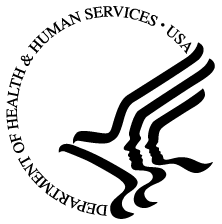Letter of Support - OPA
ATT_F3_OPA_LOS.docx
National Survey of Family Growth
Letter of Support - OPA
OMB: 0920-0314


DEPARTMENT
OF HEALTH AND HUMAN SERVICES
Office
of the Secretary
Assistant
Secretary for Health
Office of the Assistant Secretary for
Health
Office of Population Affairs
Washington, D.C. 20201
September 18, 2017
Anjani Chandra, PhD
Principal Investigator and Team Lead
National Survey of Family Growth
National Center for Health Statistics
3311 Toledo Road
Hyattsville, MD 20782
Dear Dr. Chandra,
The Office of Population Affairs (OPA) administers Title X of the Public Health Service Act and the Embryo Adoption Awareness Program. The mandated concerns of these programs create a strong need for the National Survey of Family Growth (NSFG), which provides national data on factors that influence fertility, contraceptive behavior, use of family planning services, number of sexual partners, age at first intercourse, teen pregnancy, and infertility. Often this survey is the only reliable source of national data to which OPA can turn in assembling the data required for matters of national policy.
Examples of the ways in which OPA has used the data from the NSFG include the following:
1) As the lead agency for the Family Planning Priority Area in Healthy People 2020: Health Objectives for the Nation, OPA relies heavily on estimates derived from the NSFG to provide reliable data for many of these family planning objectives.
2) The NSFG has been the primary source of data for deriving estimates of numbers of women at risk of unintended pregnancy and numbers and characteristics of women who use family planning services. The NSFG enables us to distinguish Title X clinic users from others, which helps us to determine the characteristics of these clients.
3) OPA has relied on data from the NSFG to know about trends in sexual activity and related behavior among teens, as it is the best national source of this information. Also, many NSFG reports and publications have revealed important survey findings that help shed light on the declining trend in the teen birth rate.
4) A number of research projects funded by OPA have relied on data from the NSFG to investigate questions of interest such as use of reproductive health services by men, factors related to unintended pregnancy, non-voluntary sexual activity among teens, and the characteristics of and services received by clients who visit Title X family planning clinics as compared .with other sources of family planning care.
5) Information provided by the NSFG on the reproductive behavior and motivations of males has helped OPA to improve family planning and pregnancy prevention services that target men. The data has proven valuable in the program's efforts to develop evidence-based strategies that encourage responsible reproductive health decision making among males and/or provide more effective services to males.
6) OPA's Embryo Adoption Awareness Program has used data from the NSFG to ascertain the level of awareness of embryo adoption as a method of family building. Due to its ability to look at specific subgroups, such as infertile couples, the survey is well-suited to provide the type of information that the Embryo Adoption Program needs to guide its future efforts.
OPA will continue to find data from the NSFG useful for the above-stated purposes as well as to provide evidence to help evaluate the effectiveness of its programs in serving the needs of the population they are intended to serve.
Thank you for your efforts over the years to continue this important work.
Sincerely,

Katherine Ahrens
Health Scientist
Office of Population Affairs
| File Type | application/vnd.openxmlformats-officedocument.wordprocessingml.document |
| Author | cfowler |
| File Modified | 0000-00-00 |
| File Created | 2021-01-21 |
© 2025 OMB.report | Privacy Policy